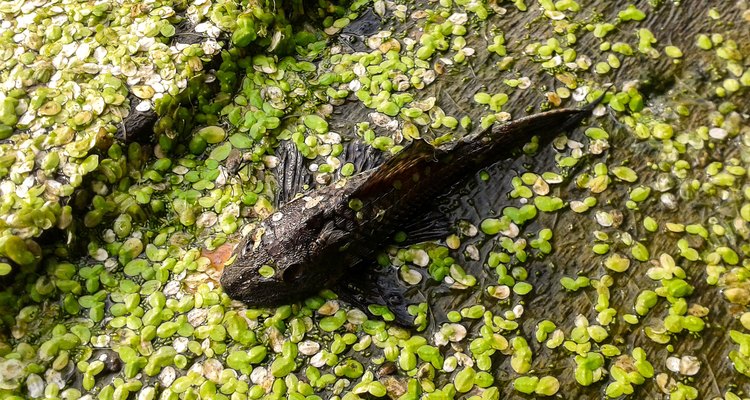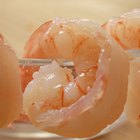
mansum008/iStock/Getty Images
The Great Lakes are home to a variety of fish, including trout, bass, sturgeon and sucker fish. Although the sucker fish may not be as popular as other fish, it is a tasty source of protein and other essential nutrients. The fish that you eat should only be from clean waters, and it has the most health benefits when you eat it in moderation as part of a balanced diet.
Background
The white sucker, or Catostomus commersoni, is also known as the common, eastern or grey sucker, the mullet or bay fish, according to the University of Wisconsin. It is native to Lakes Michigan, Huron, Erie, Ontario and Superior, and it can grow up to 20 inches in length and 4 lbs. in weight. White sucker is just as edible as other fish, and its name may help explain its lack of popularity. You can use it fresh or preserve it after you catch it.
Nutrient Content
Each serving of 159 g, or nearly 6 oz., has only 146 calories, 3.7 g total fat and 0 g carbohydrate. The white sucker provides 27 g high-quality protein. Each serving has 604 mg potassium and 64 mg sodium, and a high-potassium, low-sodium diet can help you control your blood pressure, according to the 2010 Dietary Guidelines from the U.S. Department of Health and Human Services. The fish has 111 mg calcium, or 11 percent of the daily value, 2 mg iron, or 11 percent of the daily value, and 3.2 mcg vitamin B-12, or 53 percent of the daily value.
Fats and Cholesterol
The white sucker has only 0.7 g cholesterol-raising saturated fat, and it provides 0.3 g eicosapentaenoic acid, or EPA, and 0.5 g docosohexaenoic acid, or DHA. EPA and DHA are long-chain omega-three fats, from fat in fish, which may lower your risk for cardiac death. Healthy adults should eat two servings of seafood per week to meet recommendations in the 2010 Dietary Guidelines from the U.S. Department of Health and Human Services. The white sucker is high in cholesterol, with 65 mg per serving, and healthy adults should have no more than 300 mg per day.
Suggested Uses
You can eat fresh white sucker just as you would eat other white fish, such as grilled, baked or in soups, chowders and stews, according to the University of Wisconsin. You can freeze fresh white sucker for later use, and the University of Minnesota recommends freezing it as soon as possible after catching it. Follow standard safety precautions for canning to avoid contamination with Clostridium botulinum. Another option is to brine and smoke the fish.
Related Articles

Calories in Subway Seafood Salad

How to Grill a Cod Fish

How Long Do Shucked Oysters Stay Fresh?

Types of Mild White Fish

How to Cook a Bullhead Fish

How to Cook Frozen, Boneless & Skinless ...

How to Cook Swai White Fish on the Grill

What Are the Health Benefits of Red ...

How to Cook Dead Crab

How to Grill and Smoke Swordfish

How to Make Schmaltz Herring

How to Cook White Perch

How to Cook Fried Catfish Without It ...

How to Cook Langostinos

Is Miso Soup Vegan?

How to Bake Mullet

Substitutes for a Tuna Steak

Is Grocery Store Fish Safe for Sushi?

What Is White Buffalo Turquoise?

How to Buy Fresh Tuna
References
Writer Bio
Natalie Stein specializes in weight loss and sports nutrition. She is based in Los Angeles and is an assistant professor with the Program for Public Health at Michigan State University. Stein holds a master of science degree in nutrition and a master of public health degree from Michigan State University.
Photo Credits
mansum008/iStock/Getty Images